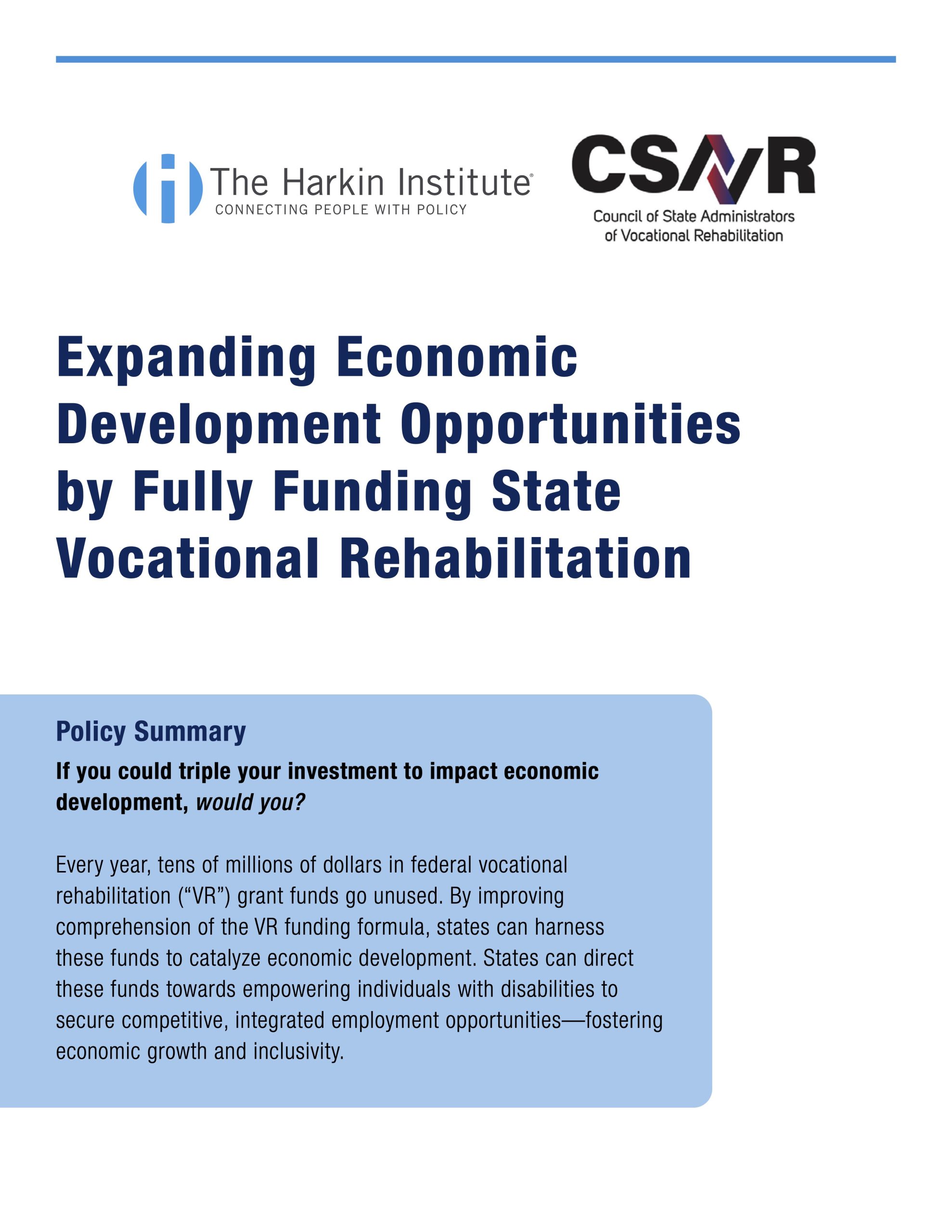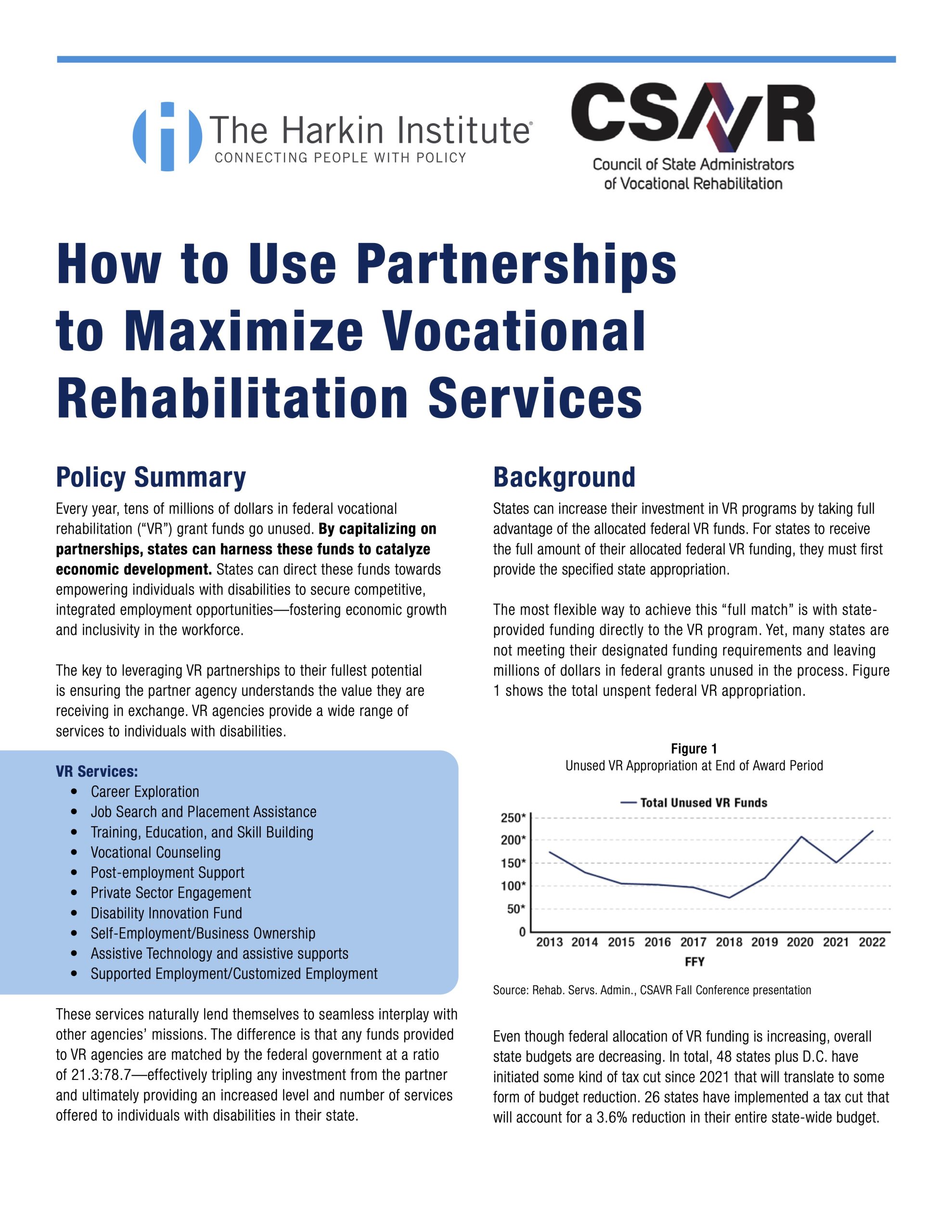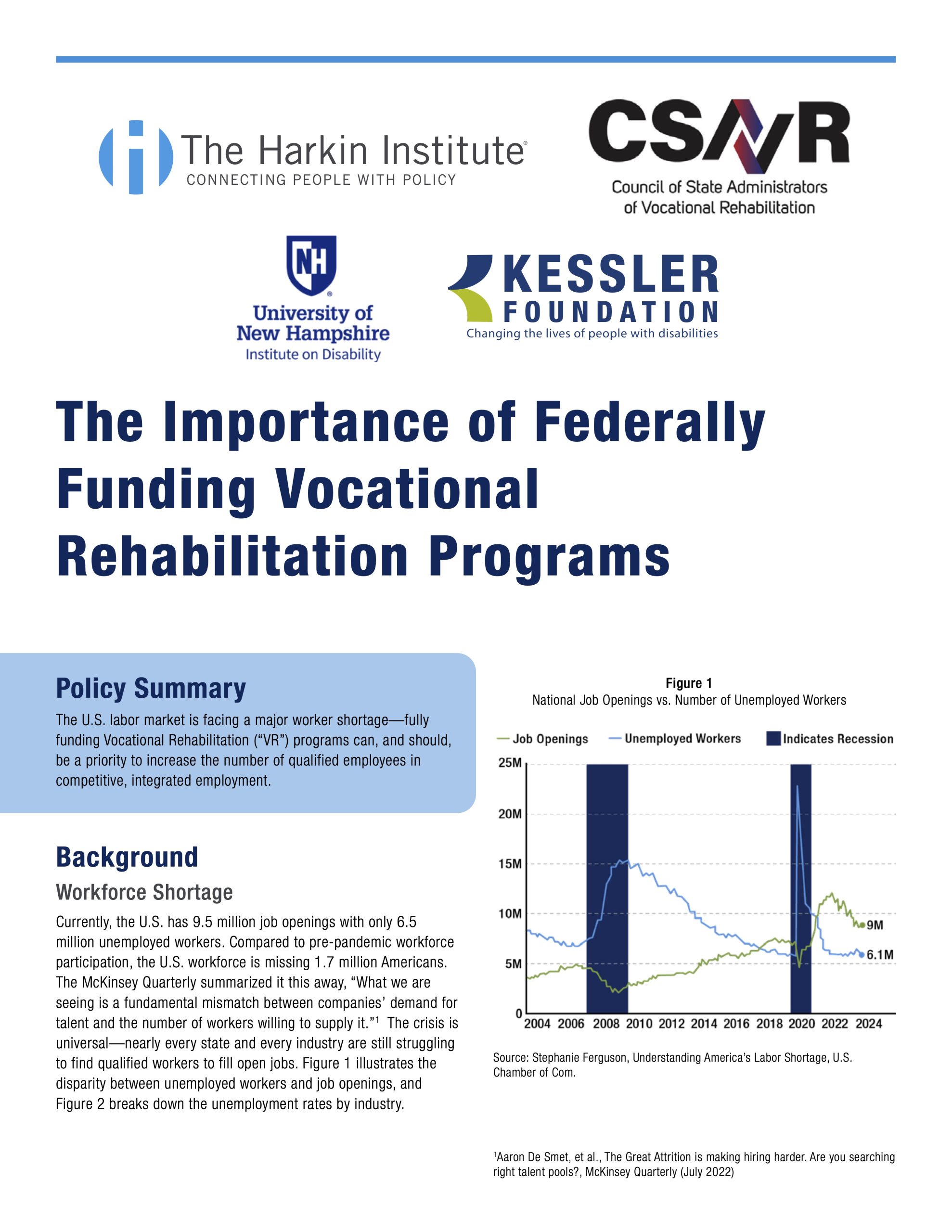Partner Briefs with the Council of State Administrators of Vocational Rehabilitation (CSAVR)
The Harkin Institute worked with CSAVR to create the following four policy briefs on various topics related to Vocational Rehabilitation services.
Expanding Economic Development Opportunities by Fully Funding State Vocational Rehabilitation
This policy brief was created to increase the comprehension of the VR funding formula among state policy makers, appropriations staff, and additional interested parties. By increasing the understanding of the VR funding formula, states can harness the funds to increase economic development through Vocational Rehabilitation services.
States that reach full match will maximize the number of services that VR can provide to working age individuals with disabilities, and in turn maximize the number of qualified employees in their workforce.
How to Use Partnerships to Maximize Vocational Rehabilitation Services
The intent of the “How to use Partnerships to Maximize Vocational Rehabilitation Services” policy brief is to educate state agency partners on the opportunity for interagency transfers to maximize collaboration for service delivery. By capitalizing on partnerships, states can harness these funds to catalyze economic development.
State Vocational Rehabilitation Agencies (SVRA’s) can use partnerships and interagency transfers to increase their state budget, to then help states maximize drawing down federal funds that can be used to help build SVRA capacity. The key to leveraging VR partnerships to their fullest potential is ensuring the partner agency understands the value they are receiving in exchange.
The Importance of Federally Funding Vocational Rehabilitation Programs
The intent of the “The Importance of Federally Funding Vocational Rehabilitation Programs” policy brief is to educate policy makers on the value proposition of the public Vocational Rehabilitation services system.
This policy brief was created in collaboration with the Kessler Foundation and University of New Hampshire Institute on Disability. The contributions of the Kessler Foundation and NHI were essential in capturing the data. Continue to follow their work on National Trends in Disability Employment (nTIDE) through their nTIDE press releases.
The U.S. labor market is facing a major worker shortage—fully funding Vocational Rehabilitation programs can, and should, be a priority to increase the number of qualified employees in competitive, integrated employment. This policy brief outlines national data trends and communicates the value of fully funding the vocational rehabilitation system.
Noting to audiences, the U.S. has 9.5 million job openings with only 6.5 million unemployed workers. This is an important distinction to communicate to the audience. There are not enough people in the workforce to cover the shortage of workers the U.S. economy is facing. The 6.5 million unemployed workers only account for those in the workforce who have been laid off or furloughed and looking for work. It is important to consider the number of working-age individuals who are “not in the labor force” but want to be. Figure 5 highlights that there are over 9 million people with a disability not in the workforce and Figure 6 shows 68.4% of all people with disabilities are striving for work. VR services is, can be, and will be one of the most effective solutions to bridging the gap and therefore, fully funding the VR service system is imperative to the workforce crisis.
The workforce participation rate has increased up to 40.1% in February of 2024, as compared to those without disabilities at 77.7 % (Figure 3), highlighting the disparity between those with and without disabilities in the labor force.
Pre-Employment Transition Services: An Opportunity to Engage America’s Youth
The intent of the “Pre-Employment Transition Services: An Opportunity to Engage America’s Youth” is to be a leave behind and introductory document for the CSAVR CLA and SVRA’s to educate policy makers and audiences who are not as well versed on the public VR system. This policy brief communicates the value the Workforce Innovation and Opportunities Act (WIOA) of 2014 has had on increasing access of the VR system for transition age youth under the Pre-Employment Transition Services (Pre-ETS) as required by WIOA.
In addition, this policy brief can be used to educate state policy makers and interested parties on the value of WIOA and Pre-ETS and the immense amount of work SVRA’s have done to implement WIOA in the past decade. This policy brief is not intended to articulate barriers; however, it is a tool to introduce the topic of WIOA and Pre-ETS allowing each SVRA to articulate their own specifics about how implementing WIOA in their state as presenting opportunities and challenges.







